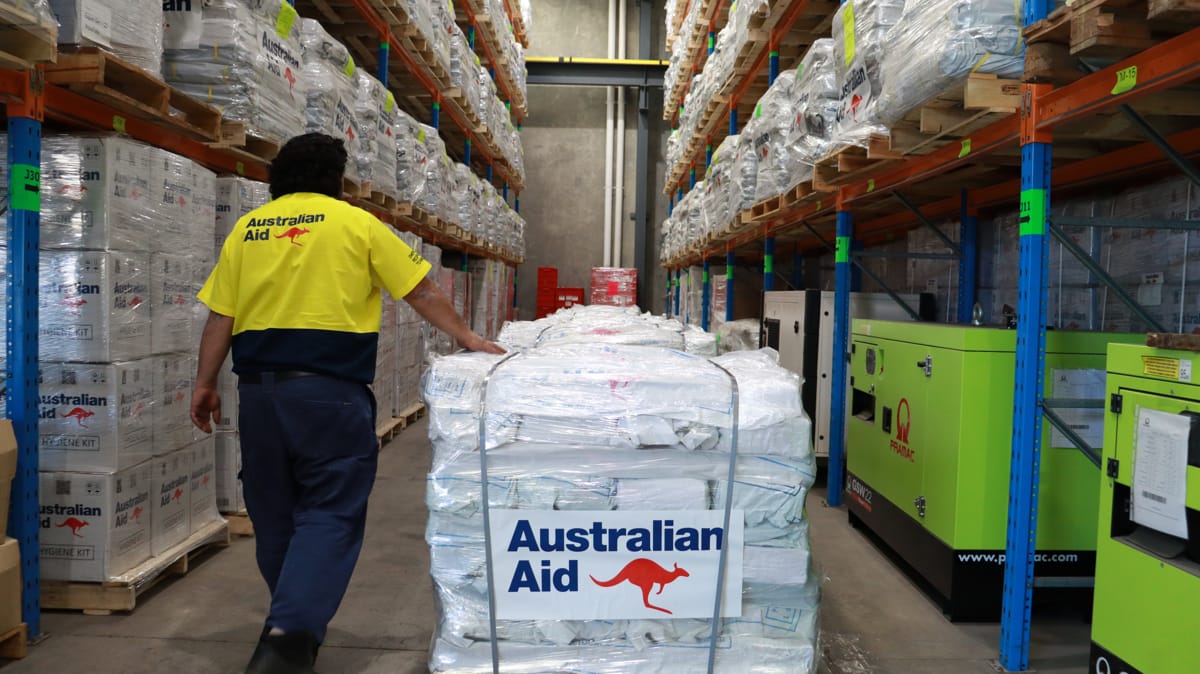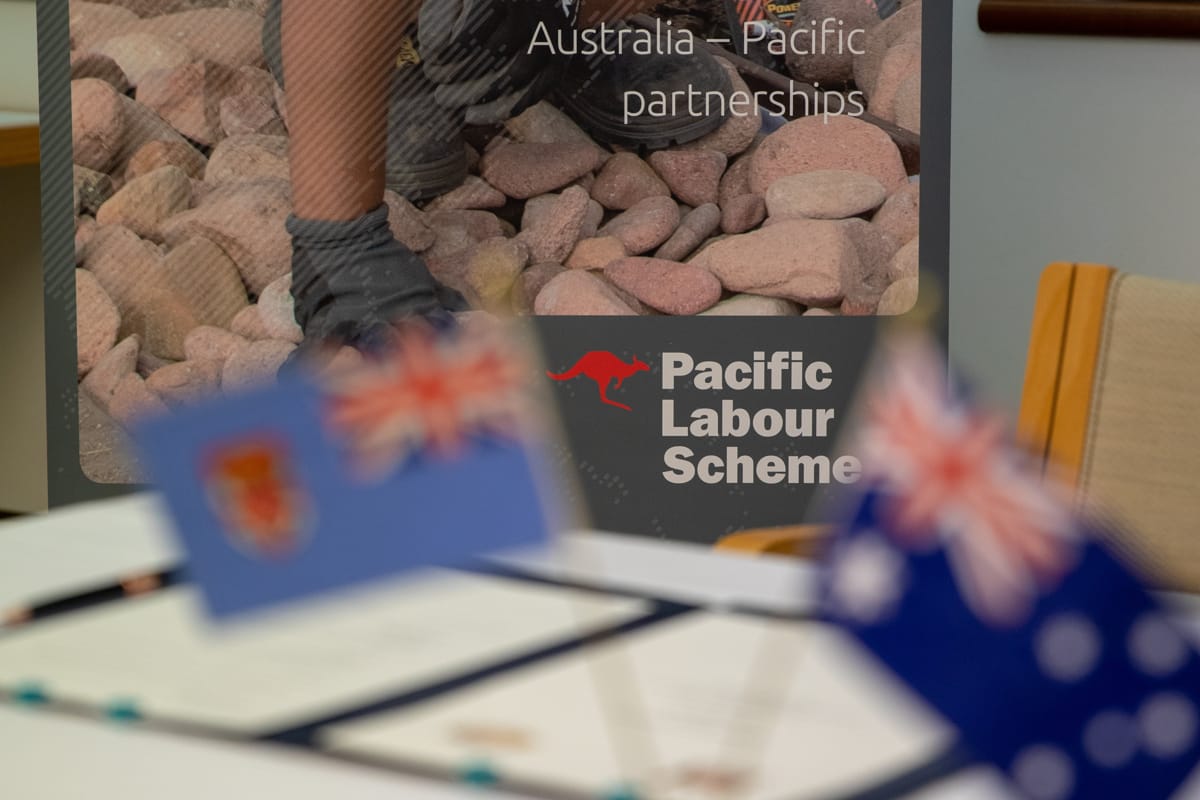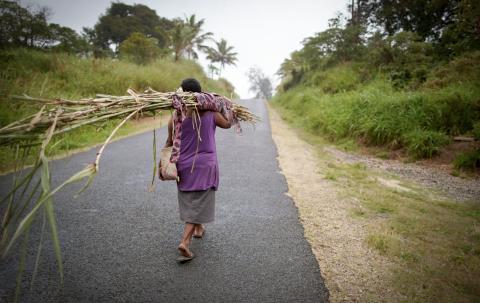Bottom lines
The diversification of Australia’s development aid funding over the past few years amid persistent government budget deficits has relied to a considerable extent on partaking from various magic puddings. So, one of the challenging aspects of the decision to double down on the blended finance approach in the new aid policy – sometimes at the expense of conventional grant aid – is that the pudding has suddenly become more expensive due to rising interest rates.
The fast-growing Pacific labour scheme stands out for its alchemical character. The most recent federal budget says the $370 million spent expanding the use of Pacific workers and looking after them better over the next four years will produce tax revenue of $300 million.
And then there was the way existing defence and police funding allocations contributed to a large part of what was branded as a new Enhancing Pacific Engagement policy, which was not strictly aid.
More recently Australia reallocated almost $5 billion of its Special Drawing Rights at the International Monetary Fund to provide low-income countries better access to concessional finance.
But it is the shift to using equity investments and concessional loans to pursue assistance ambitions in recent years that has been made easier from a budget perspective by near zero interest rates for central government debt. So, the most substantial new initiative the Australian Infrastructure Financing Facility for the Pacific (AIFFP) now operates with a $3 billion cheap lending capacity backed up with $1 billion in grant money.
To its credit the Development Finance Review, released last week with the new aid policy, acknowledges the challenges of a rising interest rate environment just when it is promoting more use of blended finance especially the concessional loans used by the AIFFP. For example, it points out that multi-billion-dollar budget support loans such as those to Indonesia and Papua New Guinea, which have been amongst the largest single recent aid initiatives, now face bigger affordability questions.
The DFAT internal review team makes a strong case for making aid dollars go further via the various financial engineering avenues of recycling and leveraging cheap Australian government money. But despite its commitments to new transparency and evaluation measures, the broader new aid policy doesn’t actually acknowledge how what it calls “innovative development financing” now has a higher hurdle for effectiveness.
A new baby BRI
The big winner from the use of more blended finance when cash aid is not increasing is the conversion of the experimental $40 million Emerging Markets Impact Investment Fund (EMIIF) into a new institution the $250 million Australian Development International (ADI). This in effect makes ADI the third leg of a modest Australian answer to China’s Belt and Road Initiative (BRI), alongside the four year old AIFFP and the beefed-up old export insurer Export Finance Australia, now with an equity investment mandate and a busier “national interest” financing role.
And this may be the closest Australia is going to get to an independent development finance institution (DFI) such as British Investment International, given the newly published review says that creating any new such institution would distract attention from addressing critical issues right now such as climate change.
That looks like a reasonable judgement. Just look at the time and difficulty it seems to have taken to bed down the integration of the former AusAID into DFAT, and the lack of new money for all this new overall aid ambition. But it once again raises questions about how much transparency there is going to be about the relative merits of shifting money from traditional cash aid spending to the ADI’s investments.

The Development Finance Review rightly points out the series of measures now in place under the baby BRI regime from the substantial $2.5 billion to support Telstra buying Digicel to the modest $5.3 million for a Vietnamese venture capital fund have not yet been subject to comprehensive publicly evaluation.
As already noted here, the Productivity Commission has taken a useful step down this path of comparing different sorts of concessional finance in its recent Trade and Investment Review although neither the Development Finance Review nor the new aid policy seem to endorse that sort of arms-length objective approach.
The most recent such examination, of the EMIIF (which presumably informed the creation of ADI), argues that the deployment of 70 per cent (or $17 million) of its original $40 million has generated five times as much private investment in funds such as the Vietnamese VC fund mentioned above. But that doesn’t account for the $16 million in operational costs for EMIIF inside DFAT.
Sure, it’s new and innovative, indeed almost even a start-up. But hopefully the new ADI will be able to function with a lower-costs-to-deployed-funds ratio.
Interesting times
While the higher cost of Australian government debt makes the shift to blended finance more expensive from an Australian budget perspective, it also comes at a time of rising concern about debt burdens in the Pacific.
The holy grain of blended finance is to expand the overall pot of available funds. But the Development Finance Review concedes the difficulty of doing this in the Pacific given the World Bank says seven regional countries are in danger of debt distress. Indeed, it concedes: “High risk of debt distress in many Pacific Island countries challenge the long-term sustainability of AIFFP’s financing approach as the gap between funding and lending rates continue to grow.”

So, while one of the attractions of blended finance in official aid is to underpin bringing more private lending or investment into poorer countries, the Review concedes that government to government lending is still going to remain the main way of financing development in the Pacific.
Nevertheless, Australia will possibly face some questions in the Pacific about how attractive its shiny new aid policy is if it is seen to be delivering the much-vaunted new climate change focus in the form of complex new debt vehicles rather than cash aid.
Joining the dots
The development of blended finance in Australia appears to have been a relatively scattergun process so far essentially responding to budget circumstances and the China behemoth. And the Development Finance Review even formalises this by declaring that it will continue to “enable learning by doing”.
This is advanced as an argument against a separate DFI because “continued expansion through existing mechanisms would leverage already successful approaches and avoid significant establishment costs of new mechanisms.”
But in a rather novel further justification for this seemingly ad hoc approach, the Review argues that learning by doing so far has created such a mixture of sovereign and non-sovereign lending or investment measures that it is now hard to unscramble the eggs in the pudding. With somewhat circular logic, it says a DFI is difficult because there is no international precedent for a stand-alone development institution that includes the sovereign and non-sovereign lending, export financing and development activities that DFAT’s baby BRI regime now encompasses.
There is also an apparent discordance between the Development Finance Review report and the new overall aid policy document on the role of economic growth, which was once a basic measure of aid success.
The report strongly advocates the use of blended finance because it is a proven catalyser of inclusive economic growth “for reducing poverty and improving quality of life in developing countries.”
However, this newly enhanced policy tool only ranks ninth in the policy document’s overall priorities for making Australia the aid “partner of choice for our region”, after things such as respectful partnerships and First Nations perspectives. And the term “economic growth” itself only features three times in the 52-page document.

